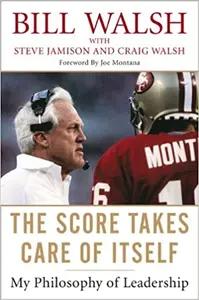The Visual Display of Quantitative Information: Second Edition PAPERBACK
By Edward Tufte
Category
CreativityRecommended by
"The Visual Display of Quantitative Information" is a highly regarded book written by Edward Tufte. In this enlightening and comprehensive work, Tufte explores the principles and practices of visualizing numerical data. Through meticulous analysis of various graphics, charts, and diagrams, he critically assesses their effectiveness in conveying information accurately and efficiently.
Tufte highlights the importance of clarity, simplicity, and precision in visual displays, emphasizing the essential goal of providing insightful and honest portrayals of quantitative information. Drawing on examples from diverse fields such as science, economics, and statistics, he demonstrates how effective data visualization can tremendously enhance understanding and decision-making.
The book delves into the subtleties of design elements, including graphical integrity, data-ink ratio, and the use of multiple dimensions. Tufte provides practical advice on how to improve the visual displays of information, advising readers on effective chart types, labeling techniques, and the selection of appropriate scales and orientations.
Moreover, Tufte investigates the potential pitfalls of misrepresenting data and presents a critical analysis of common graphical misrepresentations and distortions. By investigating notorious examples of deceptive visualizations and explaining the underlying principles that render them uninformative or biased, Tufte equips readers with the tools to identify and avoid such missteps.
"The Visual Display of Quantitative Information" is an essential reference for anyone involved in presenting data, whether in academia, business, or journalism. It challenges conventional practices, encouraging readers to think critically about how to best represent quantitative information visually, with an ultimate emphasis on fostering accurate understanding and insightful analysis.
Tufte highlights the importance of clarity, simplicity, and precision in visual displays, emphasizing the essential goal of providing insightful and honest portrayals of quantitative information. Drawing on examples from diverse fields such as science, economics, and statistics, he demonstrates how effective data visualization can tremendously enhance understanding and decision-making.
The book delves into the subtleties of design elements, including graphical integrity, data-ink ratio, and the use of multiple dimensions. Tufte provides practical advice on how to improve the visual displays of information, advising readers on effective chart types, labeling techniques, and the selection of appropriate scales and orientations.
Moreover, Tufte investigates the potential pitfalls of misrepresenting data and presents a critical analysis of common graphical misrepresentations and distortions. By investigating notorious examples of deceptive visualizations and explaining the underlying principles that render them uninformative or biased, Tufte equips readers with the tools to identify and avoid such missteps.
"The Visual Display of Quantitative Information" is an essential reference for anyone involved in presenting data, whether in academia, business, or journalism. It challenges conventional practices, encouraging readers to think critically about how to best represent quantitative information visually, with an ultimate emphasis on fostering accurate understanding and insightful analysis.
Share This Book 📚
More Books in Creativity

The Creative Act
Rick Rubin

The $12 Million Stuffed Shark
Don Thompson

The Artist's Way
Julia Cameron

The Elements of Style
William Strunk Jr.

A Technique for Producing Ideas
James Webb Young

Andy Goldsworthy
Andy Goldsworthy

Creative Selection
Ken Kocienda

Creativity
Mihaly Csikszentmihalyi

Deiter Rams
Sophie Lovell

How To Shoot Video That Doesn't Suck
Steve Stockman

Impro
Keith Johnstone

James Turrell
Michael Govan

Lateral Thinking
Edward de Bono

Leonardo Da Vinci
Frank Zollner

Lost Ocean
Johanna Basford

Nobody Wants To Read Your Sh*t
Steven Pressfield

Powers of Two
Joshua Wolf Shenk

Schulz and Peanuts
David Michaelis

Shortcut
John Pollack

Six Thinking Hats
Edward de Bono

Steal Like an Artist
Austin Kleon

The Act of Creation
Arthur Koestler

The Art of Possibility
Rosamund Stone Zander

The Belly Art Project
Sara Blakely

The Creative Society
Lars Tvede

The Gift
Lewis Hyde

The Visual Display of Quantitative Information
Edward Tufte

This Is Your Brain on Music
Daniel Levitin
Popular Books Recommended by Great Minds 📚

Can't Hurt Me
David Goggins

Destined For War
Graham Allison

When Genius Failed
Roger Lowenstein

Dune
Frank Herbert

Creativity, Inc.
Ed Catmull

The Score Takes Care of Itself
Bill Walsh

Mindset
Carol Dweck

Masters of Doom
David Kushner

Snow Crash
Neal Stephenson

The Autobiography of Benjamin Franklin
Benjamin Franklin

Extreme Ownership
Jocko Willink

Poor Charlie's Almanack
Charlie Munger

Security Analysis
Benjamin Graham

Man's Search for Meaning
Viktor Frankl

1984
George Orwell

The Power of Habit
Charles Duhigg

Give and Take
Adam Grant

Originals
Adam Grant

Surely You're Joking Mr. Feynman
Richard Feynman

The True Believer
Eric Hoffer

The Rise And Fall Of American Growth
Robert J. Gordon

Atlas Shrugged
Ayn Rand

American Kingpin
Nick Bilton

Wanting
Luke Burgis

The Bitcoin Standard
Saifedean Ammous

The Third Wave
Steve Case

Range
David Epstein

When Breath Becomes Air
Paul Kalanithi

The Lessons of History
Will & Ariel Durant

Principles
Ray Dalio